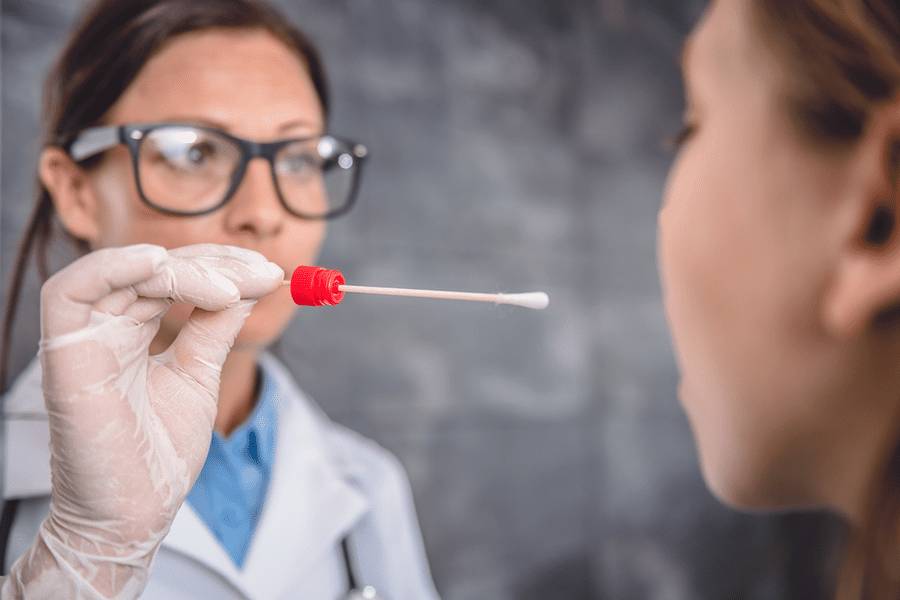Spanish study suggests saliva test could be the first step toward diagnosis

By Amy Ratner, Director Scientific Affairs
For those fearful of having blood drawn, there’s potentially good news from Spanish researchers in a study that proposes a saliva test as an accurate first step in the diagnosis of celiac disease.
Although an endoscopy and biopsy would still be needed to confirm diagnosis, scientists from the University of the Basque Country and colleagues say a saliva test they are investigating could reduce the number of unnecessary biopsies done because it is so good at predicting who has celiac disease.
The saliva test, which is still under study and not available to patients, is based on inflammatory biomarkers of celiac disease. It has a sensitivity of 91 percent, the study says. Sensitivity is a measurement of a test’s ability to correctly classify a person as having a disease. The tests specificity was 51 percent. Specificity is a test’s ability to correctly classify a person as not having a disease. Overall, the test was able to correctly classify 73 percent of individuals, according to the study.
Currently, the anti-tissue transglutaminase (TTG) test is usually done to determine whether someone should go on to have a biopsy, the results of which are the gold standard for most celiac disease diagnosis. The sensitivity of the TTG test was found to be about 90 percent in a large systematic review.
Meanwhile, a recent study from researchers at the Mayo Clinic raised questions about false negatives with the TTG test, which they suggest could be leading to under-diagnosis of celiac disease.
In the saliva test study, which was published in the journal Cellular and Molecular Gastroenterology and Hepatology, researchers pointed to evidence from 2015 that shows about 70 percent of celiac disease cases are not properly diagnosed because of negative blood tests and the complexity of interpreting biopsy results.
Additionally, only about one in seven people with the highest genetic risk are ultimately diagnosed with celiac disease following a biopsy, an expensive procedure that involves sedation or anesthesia, the authors wrote.
They conclude that this could be increased to two out of three people if biopsies were only done in those who have positive results from a saliva test. Saliva has been explored in a variety of ways in relationship to celiac disease, including whether enzymes it contains could possibly be used in a treatment. Other studies have looked at how enzymes in saliva effect gluten proteins in food when someone begins to eat.
“Considering that celiac disease is highly underdiagnosed and that actual tests are expensive and invasive, our aim was to analyze the expression of inflammatory genes in the intestine and saliva of celiac patients and controls,” the study authors wrote. They set out to find salivary biomarkers that resemble the status of the lining of the intestine and could be used for diagnosis.
Since the lining of the mouth is the first part of the gastrointestinal system, it could have immune characteristics similar to the intestine, while providing much more accessible samples for celiac disease diagnosis, according to the study.
Researchers found a “statistically significant correlation between the levels of two genes in both saliva and the samples of the intestine,” the study says.
They then evaluated whether biomarkers in saliva could be used to differentiate those who have celiac disease from those who don’t, using a blind analysis of 100 saliva samples from patients whom gastroenterologists had identified as potentially having celiac disease. Patients were put into celiac disease or no-celiac-disease categories based on the two gene biomarkers plus the presence of HLA genes related to celiac disease.
Results were correct 73 percent of the time, which the study says confirms the validity of the technique for celiac disease screening. “If only those patients pre-diagnosed [with celiac disease] using this model were subjected to endoscopy and biopsy, we would improve the positivity rate from the actual one in seven to two in three,” the authors wrote.
You can read more about the study here.
Opt-in to stay up-to-date on the latest news.
Yes, I want to advance research No, I'd prefer not to